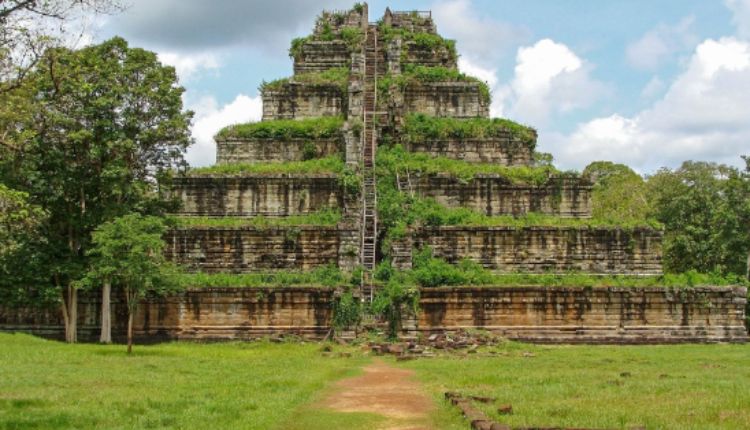
Archaeology News – Exploring Ancient Ruins
Archaeologists spend a lot of time away from their dig sites. When they aren’t digging, they’re analyzing artifacts.
These discoveries help to piece together humankind’s unrecorded history. Here’s a look at some of the most interesting finds from 2021. They’re a little different than what you might expect.
A 31,000-Year-Old Leg Amputation
In the misty rainforest caves of Borneo, a stone tool met a bone, and a limb was severed — tens of thousands of years before modern surgical tools, antibiotics, or painkillers. This is the earliest evidence of surgical amputation ever found, according to an Australian-Indonesian team.
When the researchers excavated the skeleton of a person called TB1 in 2020, they noticed something odd: the ends of the left lower leg bones (tibia and fibula) looked like they’d been cut with something sharp. But a close look at the bones showed that they’d healed without any signs of infection or other damage to the tissues, suggesting that this injury happened when the person was a child and that the amputation happened soon afterwards. The healing of the bones also indicated that the person survived the amputation and lived for six to nine more years before dying as an adult.
The discovery is “a fundamentally important milestone in the history of human medical knowledge,” the authors write in their paper published in Nature. “It pushes back the date of surgery amputation by more than 24,000 years.” (Early evidence of amputation has been found in foragers dating from as early as the Ice Age, but this is the earliest known case of deliberate amputation.)
In other archaeology news, French archaeologists have begun revealing the identities of two lead sarcophagi that were salvaged from Notre Dame Cathedral’s charred remains after a fire in 2019. One could be a wealthy canon who was buried with a ring and a gold book. Another, dubbed “Le Cavalier,” may be a wealthy nobleman from the 14th or 15th centuries. The team hopes to use DNA testing and other techniques to learn more about the people who were entombed there.
New Research Into Ancient Poop
Archaeologists often dig in the dirt, but they also use modern technology to investigate ancient ruins. For example, National Geographic Emerging Explorer Albert Yu-Min Lin uses satellites and aerial photography to search for Genghis Khan’s tomb without disturbing the site.
One key tool for studying mummies is analyzing their feces. However, archaeologists have been hampered by the fact that fossilized human poop is virtually indistinguishable from canine dung. So, researchers have developed a new way of scanning poop to figure out whether it belongs to people or dogs.
Scientists used a technique called shotgun metagenomics to analyze samples of ancient feces. It works by sequencing the DNA tidbits in the poo and using machine learning to identify the microbes that lived there. They then compared the results with modern fecal samples.
Among their discoveries: a rare microbe that produces mucous in the intestines was common in modern fecal samples but almost nonexistent in the ancient ones. The team thinks the microbe may have a link to chronic diseases like obesity and diabetes.
Another finding was a shift in the makeup of the bacterial community as humans moved to industrialized societies. The ancient feces showed more diversity in the microbes, which are important for digesting food and fighting disease. This suggests that more variety in the gut microbiome can lead to better health and a lower risk of diseases like heart disease and diabetes.
A few archaeologists have become famous for their work: Howard Carter unearthed the tomb of the Egyptian pharaoh Tutankhamun; Leonard Woolley spent years excavating ancient Ur in Mesopotamia; Heinrich Schliemann helped uncover the Minoan palace at Knossos on Crete. But many other archaeologists’ work goes unnoticed. They may not have made headlines, but they’re just as important.
A Shipwreck In The Mediterranean
With 95 percent of the world’s seafloor unexplored, oceanographers and maritime archaeologists look for shipwrecks to tell the story of ancient civilizations. But it takes special equipment to find them, including remotely operated underwater vehicles capable of navigating depths of more than 8,200 feet. The latest such vessel, a new autonomous underwater vehicle called SeaBED, will allow researchers to image wrecks at unprecedented depths.
A team led by WHOI scientist Robert Ballard recently recovered a rare treasure trove from the Eastern Mediterranean Sea, one of the most popular ancient shipping routes. The team found a mix of Hellenistic, Roman, and early Islamic ships dating from 3rd century B.C. to the 19th century that show the evolution of trade along the route.
The Eregli E shipwreck was especially remarkable because it contained thousands of ribbed clay jars, or amphorae. Based on their shape, the jars were probably used to transport olive oil or grain. The cargo also included what’s thought to be copper ingots, indicating the ship was carrying one of the world’s first industrial products.
This was a remarkable discovery, especially since most shipwrecks in the Mediterranean are only 2,000 years old. The site was discovered on the Skerki Bank, which sits near Sicily and Tunisia and is a treacherous area for ships to navigate because of its shallow waters and rocky seafloor.
The team has now mapped more than 24 sunken ships on the Skerki Bank, and they’re hoping to explore more sites in the future with the new SeaBED, which has stereo-pair color cameras that can create high-resolution photomosaics of shipwrecks. Eventually, Foley hopes to build a diver sled with a Doppler velocity log for relative navigation and multibeam sonar for precise mapping of the seafloor.
A 3,700-Year-Old Grave Site
Tucked away in the rolling green landscape of southern England lies a millennia-old grave site. The long-forgotten cemetery was unearthed by archaeologists in Salisbury ahead of a construction project and dates back to the Bronze Age, a period from 2400 B.C. to 1500 B.C. The site consists of burials arranged in barrow-style, with a mound covering the central burial and a surrounding ditch creating a circular structure, Cotswold Archaeology said in a news release.
One of the tombs held the remains of a woman, dubbed “Ava.” The find is unusual because Ava was buried in a rock-cut grave, as opposed to the cairn or pit dug into soil typically found with Bronze Age burials. In addition to her bones, Ava was buried with a silver diadem, or crown, and bracelets, necklaces and other personal items, indicating that she held high social status in the community.
The discovery of the grave site is particularly meaningful because it sheds light on an extremely challenging time in human history: The Great Famine. The famine occurred around the year 1315 and caused mass starvation across Europe. “People were living on the edge of survival and we think Ava was buried at the end of that period,” archaeologist Hugh Willmott, who led the excavation at Thornton Abbey where the Ava skeletons were found, told BBC Radio 4’s Today programme.
Other discoveries in the world of archaeology this year include a new study on footprints originally thought to be the work of early hominins. Researchers reanalyzed the footprints and determined that they were the work of an early human relative, not that of an animal species like a bear, as previously believed. NPR’s Nell Greenfieldboyce has the story.
A mummy-Embalming Tool
Researchers are discovering all sorts of new things about Egyptian mummies. They’ve unearthed mummy upon mummy, dating back thousands of years. But one of the most interesting finds comes from a shaft in an Egyptian cemetery that has yielded what could be called a mummy-making “cookbook.”
The cache includes 370 pottery storage jars used to hold ingredients for embalming corpses 2,500 years ago. Many of the jars are labelled, giving researchers a chance to learn more about what went into making those mummified bodies.
And they’ve found that ancient embalmers used far more complicated concoctions than anyone had imagined. They mixed together oils and balms, including ones from as far afield as Southeast Asia, reports the journal Nature. This discovery suggests that the secret of mummification was a global endeavor.
The jars were discovered inside the necropolis at Abusir, near Cairo. The shafts there were used by members of Egypt’s elite to store everything they needed for the 70 day embalming process. These included the jars containing ingredients and tools, as well as other objects that came into contact with the body during the mummification. One of the most fascinating items was a tool that looked like a crochet hook that embalmers used to remove the brains from the heads of their subjects.
The team has been able to use the jars to reconstruct how the brains were removed from the bodies, revealing that it was a much more complicated procedure than anyone had imagined. The researchers have also been able to peer into the interiors of these mummified bodies using powerful X-ray beams at the Advanced Photon Source, an Office of Science user facility at DOE’s Argonne National Laboratory. The X-rays allowed them to see inside the skin and other soft tissues, even through layers of linen and resin.
Conclusion
Archaeology continues to be a fascinating field that unravels the mysteries of our past. With groundbreaking discoveries and advanced technologies, our understanding of ancient civilizations and human history deepens. The ongoing efforts of archaeologists worldwide shed light on the diverse cultures that once thrived, enriching our knowledge and appreciation of our shared heritage.
FAQs:
- What is archaeology? Archaeology is the scientific study of past human cultures and societies through the analysis of artifacts, structures, and other physical remains. It helps us reconstruct ancient lifeways, understand cultural practices, and trace the evolution of human societies over time.
- How do archaeologists find and excavate sites? Archaeologists use a combination of survey methods, including satellite imagery, aerial photography, ground-penetrating radar, and on-site surface surveys to identify potential archaeological sites. Once a site is located, careful excavation with tools like trowels, brushes, and shovels is carried out to preserve and document the artifacts and features uncovered.




